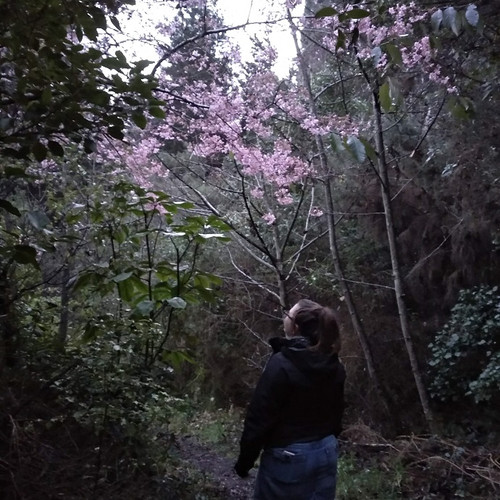Lizards lounging in the summer sun
With long days that always seem to stretch on for hours and hours, I’m often reminded of the wildlife that will be delightfully relishing the warmer temperatures of the summer sun. I’ve mentioned lizards a few times within this blog, but I haven’t delved too much into the different types or species of lizards that we might find around Dunedin.
First, I had to understand the difference between the two different types of lizards - geckos and skinks. Geckos and skinks are both lizards, but there are some physical features that make it easier to tell them apart. Geckos often live in trees and are a little more frog-like - they have a wide, well defined head, with large unblinking eyes. They have scaly-looking but silky skin and chunky legs. Skinks, on the other-hand are more snake-like, scuttling and living on the ground. They have a narrow head with blinking eyes, smooth, shiny skin and small legs. The lizard I’m interested in learning a little more about is a skink.
More specifically, I was interested to learn a little more about the Southern grass skink (Oligosoma aff. polychroma clade 5), as these skinks are often found within Dunedin backyards, and I also wondered why they have such an interesting species name? Southern grass skinks are part of a group of skinks known as a ‘cryptic species’ complex’. They are considered ‘cryptic’ because there are no morphological (physical) features that can be used to distinguish the different species. Due to genetic testing, it has been found that within the Oligosoma species, there are regional genetic differences. Within the cryptic species complex, there are 5 clades - the northern grass skink (Oligosoma polychroma), Waiharakeke grass skink (Oligosoma aff. polychroma Clade 2), south Marlborough grass skink (Oligosoma aff. polychroma Clade 3), Canterbury grass skink (Oligosoma aff. polychroma Clade 4) and the southern grass skink (Oligosoma aff. polychroma Clade 5). The abbreviation, “aff.”, stands for affinis meaning, affinity with known species.
While southern grass skinks are always some shade of brown, Southern grass skinks can vary in their colouring. They will typically be tan-brown with a darker tan stripe down their back and lighter stripes along their side separated by a darker stripe - have you seen any lizards in your backyard that look like this? We’d love to know!
They’re actually more widespread than just in Dunedin, they can be found in certain places in the lower half of the South Island and on Stewart Island, in a variety of habitats, not just backyards. They have been found living up mountains too! Like their name suggests, they are often found scuttling amongst grass. Like me, they are also often found to be basking in the sun- hanging out during the day (diurnal) on a warm surface. It is likely that they will be having their babies at the moment, bearing 3-6 live offspring. They also love to eat small invertebrates, and small fruits. And a friendly reminder: If you do see them in your backyard, please leave them alone, not only can they be shy, a permit from DOC is required to handle them. There are some things you can do though, to look after them in your backyard - check out this awesome resource from Predator Free New Zealand!
References:
- https://teara.govt.nz/en/diagram/13511/geckos-and-skinks
- https://otagomuseum.nz/blog/hide-and-seek-new-zealand-lizards/
- https://www.reptiles.org.nz/herpetofauna/native/oligosoma-aff-polychroma-clade-5
- http://museum.dnalc.org/bold/crypticspecies.html
- https://www.doc.govt.nz/parks-and-recreation/places-to-go/toyota-kiwi-guardians/take-action/attract-lizards-to-your-garden/
- https://www.doc.govt.nz/nature/native-animals/reptiles-and-frogs/lizards/
- https://www.doc.govt.nz/nature/native-animals/reptiles-and-frogs/lizards/dont-touch-lizards/
- Open Nomenclature in the biodiversity area





